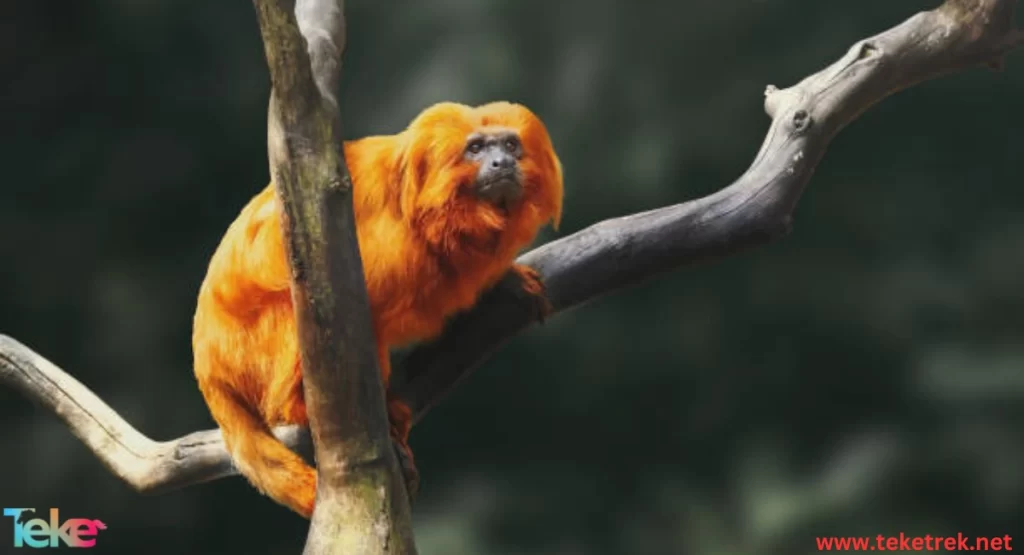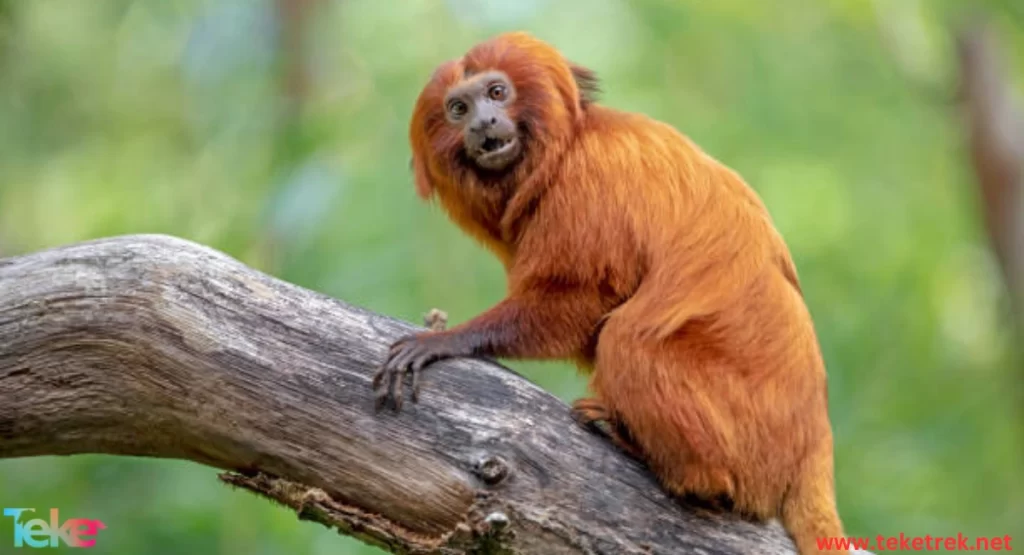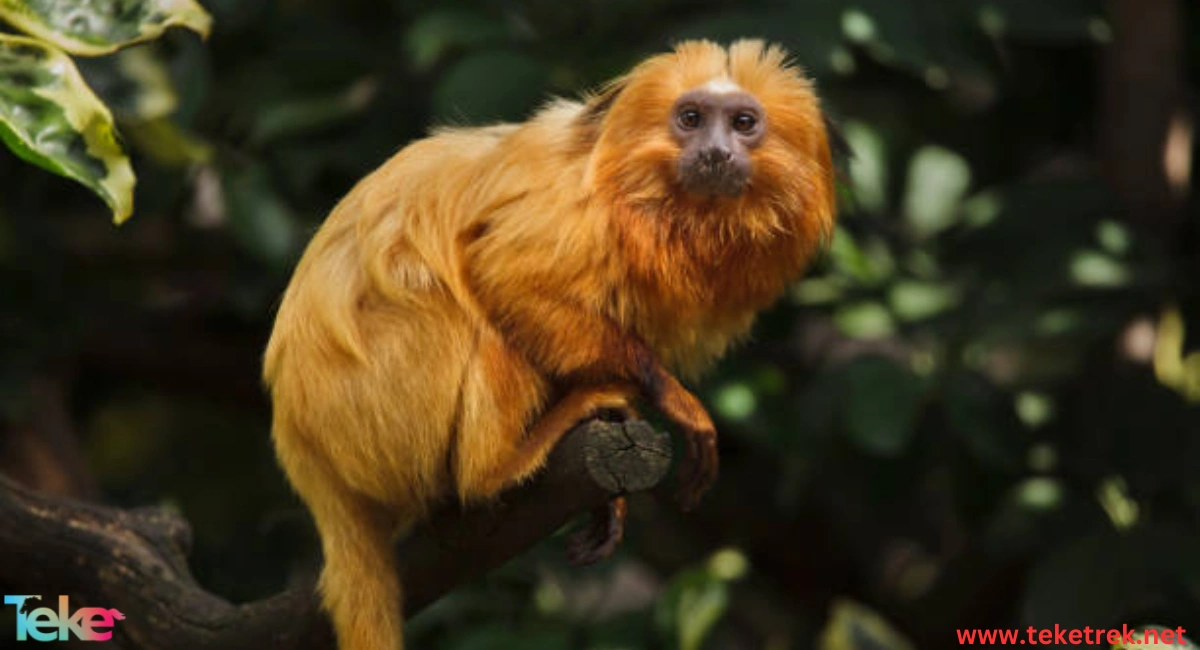The Golden Lion Tamarin is a small monkey in the New World, easily recognized by the reddish-gold fur surrounding its hairless face, resembling a lion’s mane.
Let’s learn more about it from teketrek.
Facts about the Golden Lion Tamarin
It Belonging to the Callitrichidae family of primates, genus Leontopithecus, order Primates, subphylum Vertebrates, class Mammals.
Scientifically known as Leontopithecus rosalia, referring to its lion-like appearance and red color.
All four species of Golden Lion Tamarin live in the Brazilian rainforests. Due to habitat loss, their numbers have decreased dangerously, pushing them close to extinction.
However, intensive conservation efforts in recent years have helped bring them back from the brink.

The Golden Lion Tamarin’s specification
The size: The Golden Lion Tamarin is about the size of half a liter, living in trees
The fur: with a luxurious and long golden fur covering its body, except for its face and palms. A layer of fur surrounds its hairless facial edges, extending backward over the ears like a lion’s mane, giving it a unique appearance.
The Whiskers:
The Golden Lion Tamarin has golden to reddish whiskers on each cheek.
The claws: Instead of flat nails like humans and other primates, it has claws, called tegulae, which help it dig into tree bark for insects and grasp branches while moving through tree canopies.
The weight: The weight of the Golden Lion Tamarin ranges from about 482 grams to 680 grams.
The length: with a length of 15 to 25 cm and a tail length of 32 to 40 cm.
Fascinating Facts About the Arctic Hare: Survival in the Frozen Wild
Behavior of the Golden Lion Tamarin
This arboreal creature is social, living in core groups of up to eight relatives who care for each other and play together.
Typically, each family group has a monogamous pair for life.
The Golden Lion Tamarin marks its territory with scent to deter strangers, and the family issues warning calls to alert danger.
When individuals are aggressive, they arch their backs, open their mouths, and stare.
Additionally, the Golden Lion Tamarin uses a specific call to allow others in the group to locate it, emitting a chirping sound when foraging and screaming in excitement during play.
Habitat of the Golden Lion Tamarin
The Golden Lion Tamarin lives in three small areas in southeastern Brazil, all protected reserves:
Poco das Antas Biological Reserve, União Biological Reserve, and privately owned reserves working with a reintroduction program, all in Rio de Janeiro state.
Some live on hilltops along the southeastern coast of Brazil.
Diet of the Golden Lion Tamarin
These species of monkeys are considered animals carnivorous , feeding on lizards and spiders.
The main criterion in choosing their food is if it is small enough to handle. When they eat and digest fruit and flowers, they naturally scatter seeds throughout their habitat via their feces, helping to maintain environmental abundance.
The Golden Lion Tamarin has claws that help it grip branches more securely, reducing the risk of dangerous falls.
Reproduction stages of the Golden Lion Tamarin
Golden Lion Tamarins are usually monogamous with one partner within the family group, beginning the mating season as the rainy season approaches its end between April and June.
Females give birth to twins, although sometimes three or four offspring are born, and during the first month after birth, the offspring rely entirely on the mother, who nurses them and carries them on her back.
The dominant male and female in the group can start reproducing when each is approximately two and a half years old, while other mature males and females do not reproduce until they form their own family groups.

FAQ
- How long does a golden lion tamarin typically live?
A Golden Lion Tamarin can live approximately 8 to 15 years.
- What animals prey on the Golden Lion Tamarin?
Large birds of prey, raccoon-like birds, snakes, margays, and small Brazilian wildcats pose a threat of predation to the Golden Lion Tamarin.
- How many Golden Lions are left in the world?
About 2,500 object.
- What is special about the golden lion tamarin?
Both male and female golden lion tamarins have mane-like hair that frames their faces. They use their long, slender fingers and claws to break through tree bark and extract insects for food.This process is called micromanipulation
In conclusion, it is important to emphasize the need for significant efforts to care for and protect this animal, as it plays a crucial role in achieving environmental balance.
Reference





